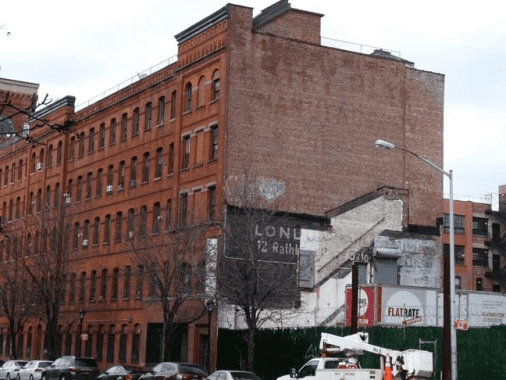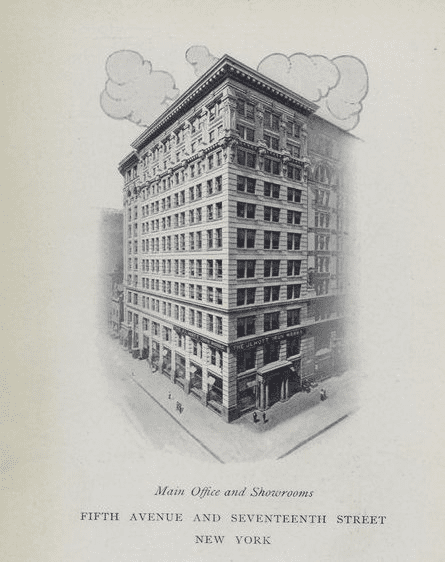New York is more than just the Statue of Liberty, Times Square, the Empire State Building, Rockefeller Center and The Metropolitan Museum of Art. If you want to learn something new about the city you live in or are on a visit, you should know that it has other interesting and historical places worth visiting. One such place is the historic Mott Haven area, which is located in the South Bronx. Find out more about it at bronx-future.com.
Neighborhood’s history
According to livingplaces.com, Mott Haven is located in the South Bronx. This area still remembers the time when Native Americans lived here. There were many forests, rivers, wildfowl and fish around. Europeans were just planning to establish their colonies on these lands. In 1639, the Dutch landed there, namely, representatives of the Dutch West India Company. Already in 1941 (ages and ages ago), Dane Jonas Bronck purchased the land between the Harlem and Bronx rivers from the Company and settled in this area. He was the first one to live here, so the borough was named after him, except for the Indians, of course, whose names were not etched into history.
In 1670, Bronck sold the land to merchants from Barbados, Richard and Lewis Morris. As soon as they bought one plot of land, they received another one from the king due to connections in British royal circles. Therefore, the brothers doubled their landholdings in this area and got important official positions. Although nothing is named after them in this area, the memory of merchants still exists there. It was they (their descendants, to be precise) who sold their land 200 years later to a Scottish immigrant, Alexander Bathgate. Now, the district’s central street has the name of Bathgate, who created Croton Gorge Park and invested financially in the development of these lands.
Jordan L. Mott and Mott Haven
You may wonder, where did the name of this quarter come from? It’s simple, it derives from entrepreneur Jordan L. Mott. In the early 20th century, his father was Acting Mayor of New York and the owner of a foundry business. The son was an inventor and continued father’s business in metallurgy. So, Jordan L. Mott, who in 1828 invented a coal furnace to melt iron using anthracite, constructed a metallurgical plant on these lands in 1849. The plant was located on the Harlem River at 134th Street. His company produced furnaces, stoves, grilles, boilers, kettles, bench seats, pipes, water containers, candelabras and other metal utensils. The factory’s products can still be found all over the city, often it is air-shaft grates and hatch covers.

This was the first large enterprise in the Bronx. Before that, it was mostly agricultural lands and this area was kind of an adjunct to the big city, a place for recreation, fishing, picnics, etc. That is why locals had a hostile attitude toward the new plant here. But the factory was built on private property, including Mott’s residence nearby. Then he purchased another land plot from the Morris landowners for $175 per acre and named the settlement Mott Haven. At this time, the modern streets of the Mott Haven district were laid and named. Governor G. Morris, who sold Mott these grounds, was an extraordinary person. He was a daredevil and an adventurer from a young age. He also knew French, which helped him to become an ambassador of this country. The Governor had a passion for horse riding without a harness and this played a cruel joke with him. Once, he fell and the horses dragged him along, therefore, he became crippled and walked with a wooden leg for the rest of his life.

Mott Haven Canal and the population of the neighborhood
In 1850, part of the Mott Haven Canal, which at that time was partially underground and ran parallel to Morris Avenue and east of the Harlem River, was expanded. This allowed the boats to sail all the way to 138th Street. New enterprises opened here, such as sawmills, brickyards and factories for the production of pianos, furniture, food and ice. At that time, the South Bronx was even called the “piano capital of the United States”. You can still find most of the former piano factories (Bollermann-Kroger, Haines-Kroger и Krakauer Piano) on Bruckner Boulevard and nearby streets. This continued until the First World War, after which the piano ceased to be in demand. The canal also became the reason for the population growth in the district. Irish and German immigrants settled there, and apartment buildings were built to accommodate them. That is why part of the neighborhood was Irish and Alexander Avenue was even known as The Irish Fifth Avenue, Doctors Row and Politicians Row. It was home to prosperous Irish, doctors and politicians who worked in Manhattan. People of other nationalities also settled there. For example, now, many Puerto Ricans live in this area.
For a long time, the canal served as a railway. It helped to transport coal, wood and construction materials to the Mott Haven railway station and the Madison Avenue bridge. After a while, 138th Street was laid there; it was used instead of the canal, which was underground again.
Morrisania and Mott Haven
After 1830, the Mott Haven settlement, as we remember it was the site of a metallurgical plant and surrounding houses, was merged with other neighboring settlements in the Bronx. In 1885, the new town was named Morrisania. The Harlem Railroad was built there in 1842, thus, the territory was developing very quickly.

Mott Haven in our days
Today, Mott Haven covers a large part of the South Bronx. It consists of 10 blocks of apartment houses (high-rise and low-rise buildings), shops, and small service enterprises, located between 138th Street and Third Avenue. The district has many beautiful 19th-century buildings, for example, three churches (Roman Catholic Church of St. Jerome, Tercera Iglesia Bautista church and St. Peter’s Lutheran Church), rectory, school, library (a branch of the NY Public Library is located in Mott Haven) and the police station. There you can observe Renaissance, Greek, Greek Revival and modern architecture. Alexander Avenue is the central street of the neighborhood.

The Lester Patterson Houses or Patterson Houses are an important part of the area. This public housing consists of fifteen buildings 6 and 13-stories tall. They were constructed between 1948-1953 and named after a judge and Bronx Congressman, Lester Paterson. The houses have 1,790 apartments, occupy 17 acres of land and are located between East 138th and 145th Street.
So, Mott Haven is a modern Bronx neighborhood with an interesting historical background. There was a canal, a metallurgical plant, numerous piano production factories as well as plenty of space for rest and comfortable life. Now the quarter is not in its best condition, but surely the best days are yet to come, isn’t it?


